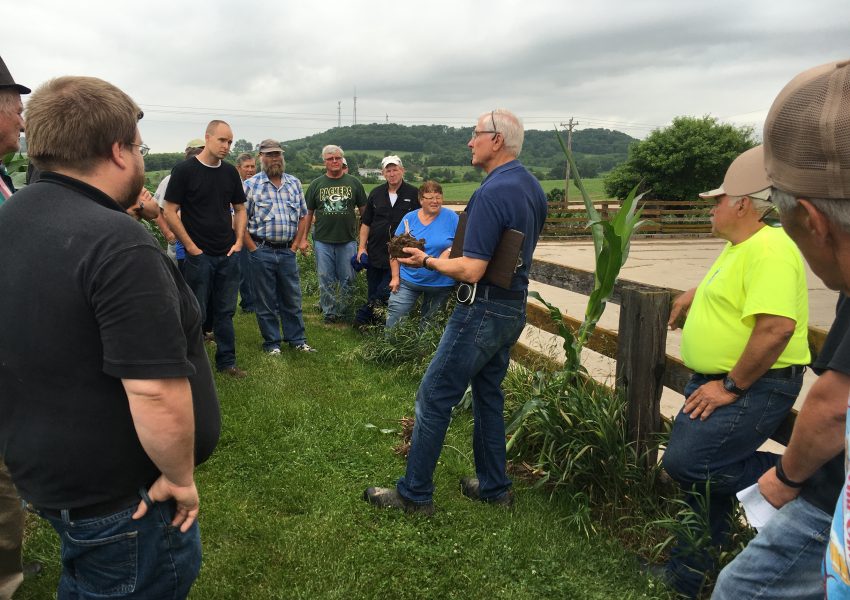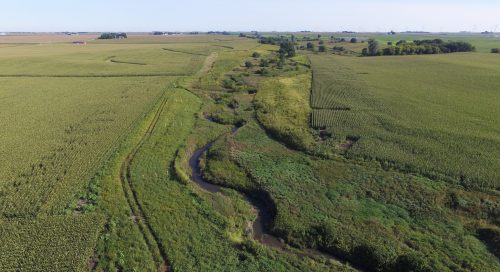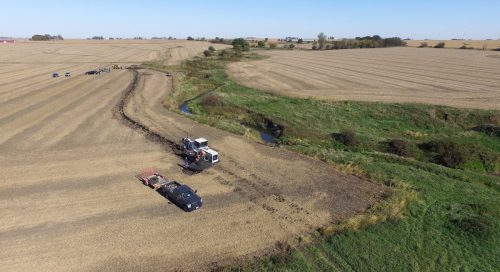People are the ultimate driver of change. This is no exception in achieving clean water and soil health goals in the Midwest. It is the skills, decisions, and networks of people that will determine whether land management decisions collectively will move the needles measuring progress: nutrient loads, harmful algal blooms, and the size of the hypoxic zone in the Gulf of Mexico.
Human capital, or an individual’s skills and confidence to perform their job, is a critical ingredient of the power of people. Yet, in watershed management, it is a limiting and often overlooked resource.
While the term human capital has roots in business and the pursuit of economic value, it is important to extend its definition to its socio-ecological value in watershed management and conservation. Human capital is the seed of change from which effective leadership and action germinate. While there is an existing seedbed for human capital across the Midwest, it is in urgent need of cultivation to properly address the scale of our water quality challenges.
We need to invest as much, or more, in our human capital as we do already in technological and tactical solutions for reducing nutrient pollution. This is the mission underlying this new blog series, Human Capital. It will be a source of insights and stories that aim to improve and promote the competencies and confidence needed for effective leadership in watershed management – and to increase investment in it.
One of the main existing sources of human capital in watershed management is watershed coordinators and other conservation professionals in similar roles. Most often employed with state or county agencies and nonprofits, watershed coordinators are tasked with mobilizing voluntary, community-based efforts to reduce nutrient loads and improve water quality in ways that also benefit their communities socially and economically. This means they must understand not just the science and techniques of watershed management, but also the science and art of mobilizing and organizing people.
Another essential source of human capital for successful watershed management is leadership from farmers, landowners, and farm advisors. Their everyday decisions determine the extent of nutrients leaving the land and entering the water, and their positions within their communities give them enormous potential for influence and leadership.
These watershed leaders are critical bridge builders between people who have different interests and stakes in watershed management. And it is probably not surprising that these roles are extremely demanding, with time and funding constraints, tricky political dynamics, leadership fatigue, economic and social pressures that can work against their progress, and a job that requires a breadth of skills few people possess all at once.
If we are to multiply conservation practices across the Midwest to the scale necessary to achieve water quality goals, we must elevate and nurture skilled and effective leadership among watershed professionals, farmers, farm advisors, landowners, and others engaged in watershed management.
This blog series will contribute to this pursuit by sharing insights for being an effective watershed leader, stories of success and lessons learned in watershed management, and innovative ideas for tapping human potential.
The time for the conversation about human capital is now, as we face a big challenge that underscores the promise of tapping our even bigger potential. Most of the Midwest lies within the Mississippi River Basin, where collective efforts to shrink the hypoxic zone in the Gulf of Mexico are nearing an important milestone, as outlined in the Hypoxia Task Force Action Plan: a 20 percent reduction in nutrient loads to the Gulf by 2025. This reduction would be a significant sign of progress toward the ultimate goal to shrink the hypoxic zone to a five-year running average of 5000 square kilometers by 2035.
However, in 2019, NOAA measured the size of the zone at 18,005 square kilometers, the eighth largest area mapped since 1985 and nearly four times the area of that 2035 goal. On top of this, extreme rains and flooding are increasingly competing against on-the-ground progress in reducing nutrient loads.
Decisions affecting water are made not by few, but by many – whether in water treatment facilities, manufacturing, farming, or lawn care. This means we will need more human capital than ever to mobilize and organize the efforts necessary to reach the 20 percent milestone in five years.
Our hope is that this blog series can contribute to a groundswell of investment in human capital for watershed management, so we can overcome the obstacles and achieve our goals for clean water. We invite you to follow the series and embed yourself in this learning space.
You can learn more about the need for human capital to scale up watershed management in the report “Successful Watershed Management in the Midwest: Getting to Scale.”
Header photo by Beth Baranski



